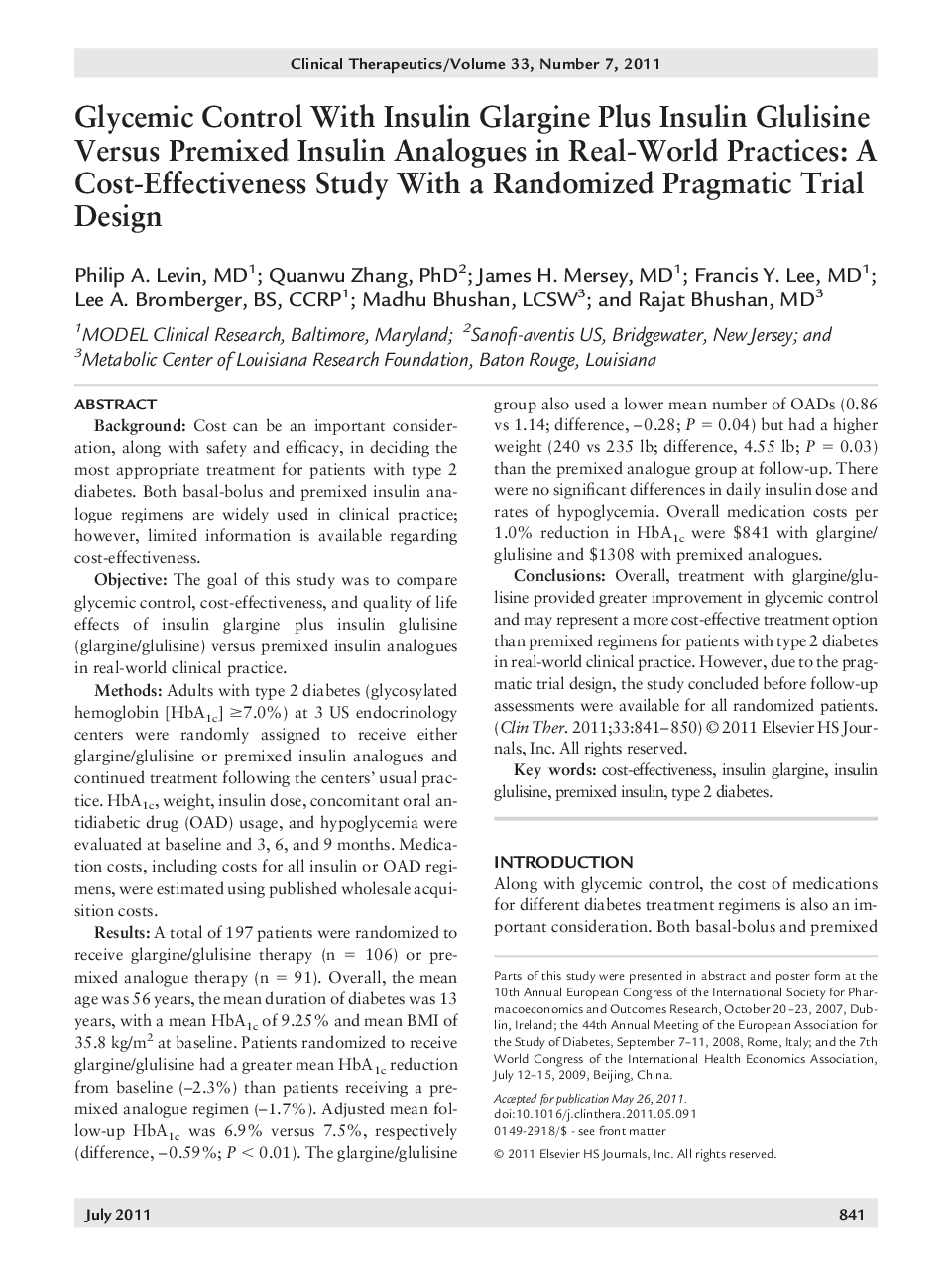| کد مقاله | کد نشریه | سال انتشار | مقاله انگلیسی | نسخه تمام متن |
|---|---|---|---|---|
| 2527485 | 1119921 | 2011 | 10 صفحه PDF | دانلود رایگان |

BackgroundCost can be an important consideration, along with safety and efficacy, in deciding the most appropriate treatment for patients with type 2 diabetes. Both basal-bolus and premixed insulin analogue regimens are widely used in clinical practice; however, limited information is available regarding cost-effectiveness.ObjectiveThe goal of this study was to compare glycemic control, cost-effectiveness, and quality of life effects of insulin glargine plus insulin glulisine (glargine/glulisine) versus premixed insulin analogues in real-world clinical practice.MethodsAdults with type 2 diabetes (glycosylated hemoglobin [HbA1c] ≥7.0%) at 3 US endocrinology centers were randomly assigned to receive either glargine/glulisine or premixed insulin analogues and continued treatment following the centers' usual practice. HbA1c, weight, insulin dose, concomitant oral antidiabetic drug (OAD) usage, and hypoglycemia were evaluated at baseline and 3, 6, and 9 months. Medication costs, including costs for all insulin or OAD regimens, were estimated using published wholesale acquisition costs.ResultsA total of 197 patients were randomized to receive glargine/glulisine therapy (n = 106) or premixed analogue therapy (n = 91). Overall, the mean age was 56 years, the mean duration of diabetes was 13 years, with a mean HbA1c of 9.25% and mean BMI of 35.8 kg/m2 at baseline. Patients randomized to receive glargine/glulisine had a greater mean HbA1c reduction from baseline (–2.3%) than patients receiving a premixed analogue regimen (–1.7%). Adjusted mean follow-up HbA1c was 6.9% versus 7.5%, respectively (difference, –0.59%; P < 0.01). The glargine/glulisine group also used a lower mean number of OADs (0.86 vs 1.14; difference, –0.28; P = 0.04) but had a higher weight (240 vs 235 lb; difference, 4.55 lb; P = 0.03) than the premixed analogue group at follow-up. There were no significant differences in daily insulin dose and rates of hypoglycemia. Overall medication costs per 1.0% reduction in HbA1c were $841 with glargine/glulisine and $1308 with premixed analogues.ConclusionsOverall, treatment with glargine/glulisine provided greater improvement in glycemic control and may represent a more cost-effective treatment option than premixed regimens for patients with type 2 diabetes in real-world clinical practice. However, due to the pragmatic trial design, the study concluded before follow-up assessments were available for all randomized patients.
Journal: Clinical Therapeutics - Volume 33, Issue 7, July 2011, Pages 841–850